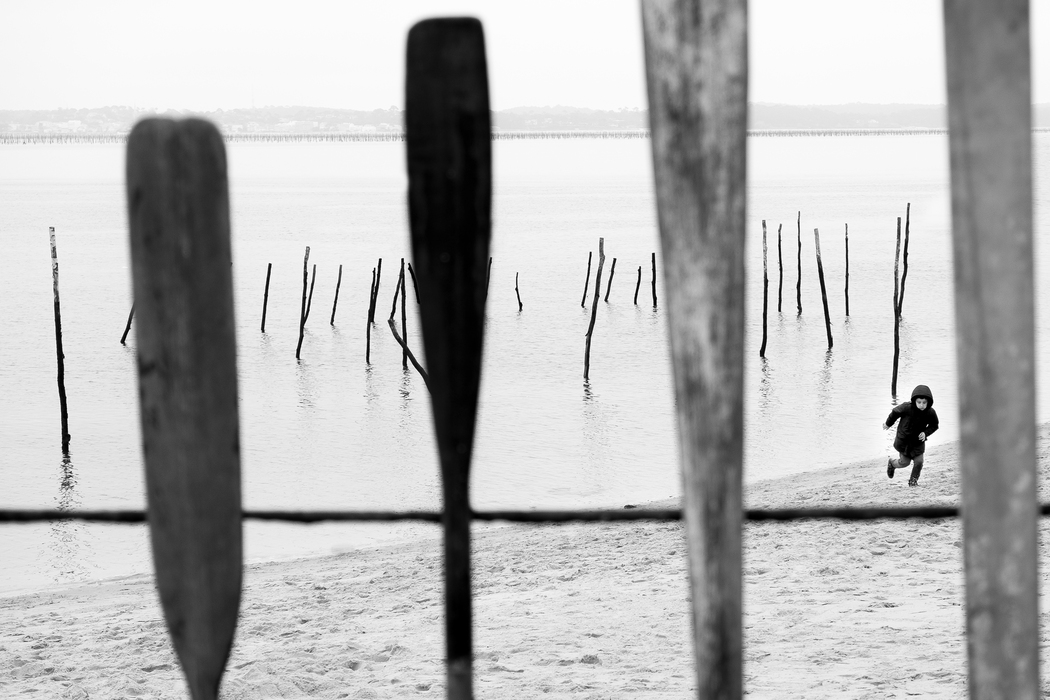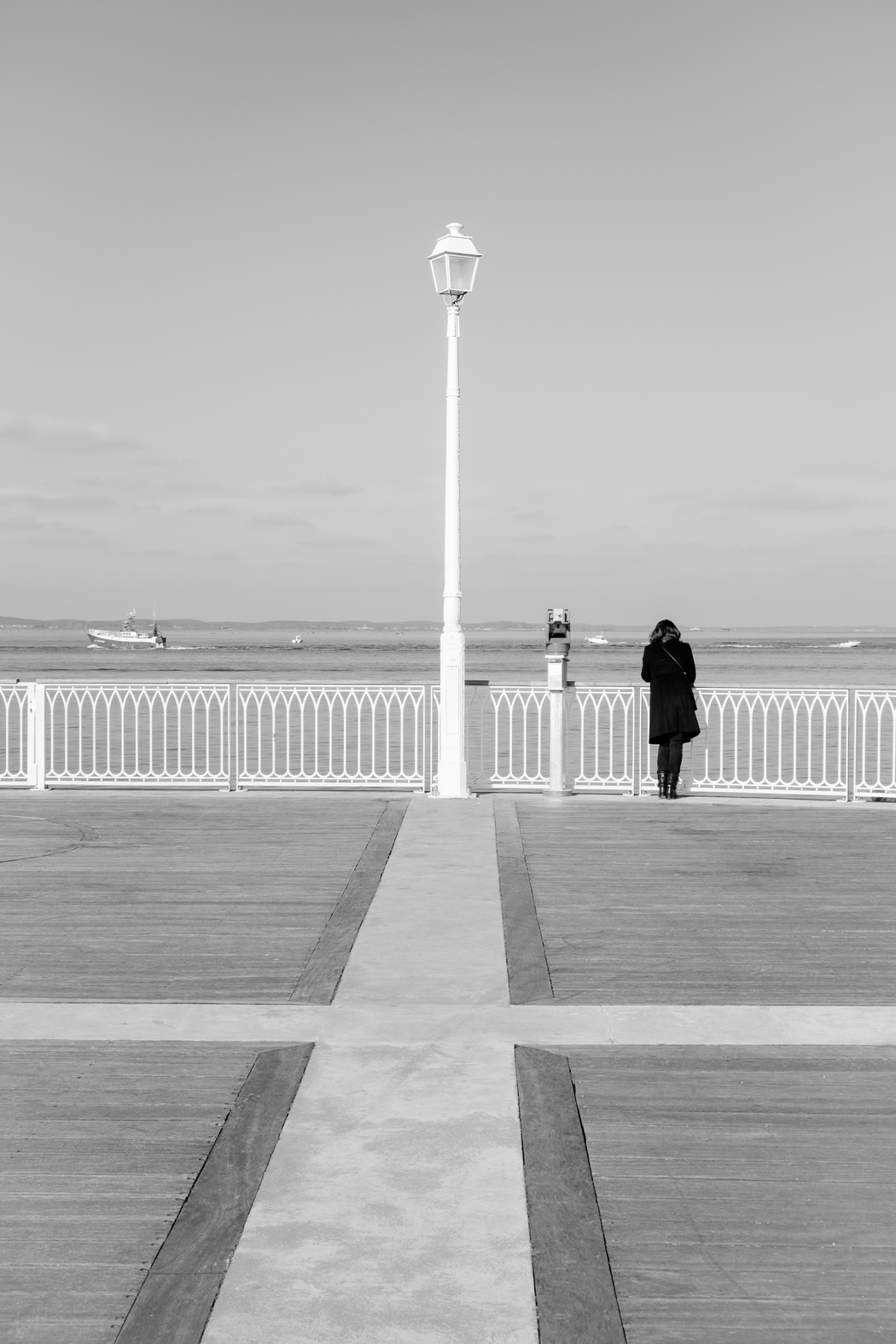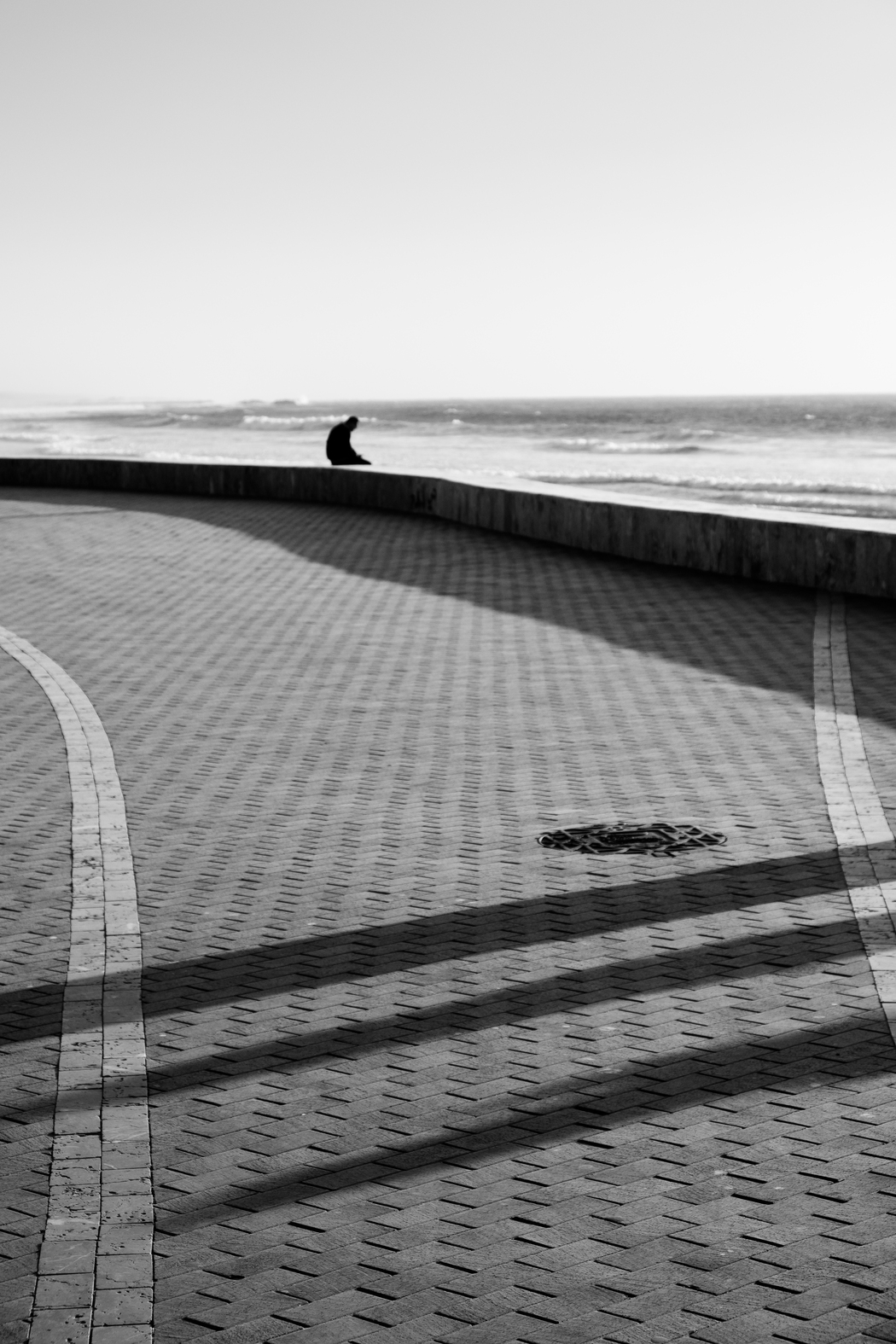Dominique Philippe Bonnet
What first drew you to photograph coastal landscapes during the off-season, rather than during their more vibrant summer months?
What captivates me about photographing the coast outside the summer season is the dramatic shift in atmosphere that emerges when the liveliness fades. During the high season, beaches are filled with noise, movement, and colour—but once autumn sets in, a silence takes over, and the landscape is stripped down to its essential elements. That quiet, almost melancholic atmosphere offers a much deeper emotional and visual experience.
In the absence of people, I’m able to observe the lines, textures, and structures of the coast more clearly. The minimalism of the empty space allows me to compose in a more deliberate and expressive way. I’m especially drawn to the stillness and solitude of these moments—it’s a time when the sea feels more introspective, and that emotional tone aligns perfectly with my black and white aesthetic. So, the off-season is not a “lesser” time to photograph—on the contrary, it reveals a poetic and contemplative side of these places that we rarely take the time to see.
Your artist’s statement speaks of silence, memory, and introspection. Do you approach each shoot with a narrative in mind, or do you let the scene reveal itself to you?
I don’t begin with a fixed narrative in mind. For me, photography—especially in the context of OFF SEASON—is about being present and receptive to what the landscape offers in that moment. I walk through these deserted coastal spaces without expectations, letting the silence and atmosphere guide my eye. The introspective quality of the work comes from observation and patience. I let the scene unfold slowly, paying attention to subtle details: a long shadow cast by an abandoned structure, a single trace in the sand, the way the light changes as clouds move overhead. These elements often carry their own quiet story, and my role is to listen visually and translate that into composition.
That said, over time, certain emotional threads emerge—nostalgia, solitude, the passage of time—and they begin to shape the way I see and frame future images. So while I don’t plan a narrative in advance, I do remain deeply connected to the mood and themes that resonate throughout the series. It’s a balance between intention and openness.
 Dominique Philippe Bonnet | OFF SEASON
Dominique Philippe Bonnet | OFF SEASON
Black and white photography plays a central role in this series. Can you describe what this choice unlocks for you emotionally and compositionally?
Black and white allows me to distil the image down to its essential elements—light, shadow, form, and texture. In the context of OFF SEASON, this is especially powerful because the absence of colour mirrors the emotional tone of the work: quiet, contemplative, and sometimes melancholic. Emotionally, black and white strips away distractions and allows the viewer to engage more directly with the mood of the scene. Compositionally, it sharpens my focus on structure and contrast. It’s as if the image becomes more about presence and absence, light and void—mirroring the themes of the series itself.
Ultimately, black and white helps me express something more internal, more reflective. It’s not just a stylistic choice—it’s a language that fits the emotional landscape I’m trying to explore.
The sense of absence in your images feels powerful. Do you see these spaces as abandoned, resting, or something else entirely?
I don’t see these spaces as abandoned—rather, I see them as resting. There’s a quiet dignity in their temporary emptiness, a sense that they are simply pausing between two states of being. During the summer months, these places are full of energy and movement; in the off-season, they return to a more natural, introspective state. This period of rest reveals something essential about the landscape—its underlying structure, its raw beauty, and the traces left behind by human presence. The absence we perceive is not a void, but a space charged with memory. It’s as if the beaches are breathing again, reclaiming their identity beyond the function of tourism.
For me, this resting state holds great emotional and visual potential. It invites a slower gaze and a deeper connection. The stillness isn’t emptiness—it’s presence in another form.
 Dominique Philippe Bonnet | OFF SEASON
Dominique Philippe Bonnet | OFF SEASON
What role does time play in your photography—not just in the seasonal sense, but in how long you observe or wait before capturing a moment?
Time is at the very heart of my approach to photography, both in the broader seasonal rhythm and in the quiet act of observation. In OFF SEASON, the passage of time is everywhere: in the fading marks on the sand, the weathered surfaces of closed beach structures, or the long shadows cast by the low winter sun. These traces of time are part of the story I want to tell. But time also plays a crucial role in how I create the images themselves. I often spend long periods simply walking, watching, letting the environment speak to me. I rarely rush to press the shutter. I wait for a certain alignment—a shift in the light, a passing cloud, or the subtle moment when the composition feels complete.
This slow, deliberate pace mirrors the introspective nature of the work. It allows me to connect more deeply with the place and to become more attuned to its quiet transformations. I think that when you take time to really observe, the photograph becomes more than a document—it becomes a reflection of presence, patience, and emotional resonance.
Your compositions often leave room for the viewer’s imagination. How intentional is that “emptiness,” and how do you decide what to leave out of the frame?
The “emptiness” in my compositions is very intentional. I see it not as a lack, but as a space of possibility—a visual and emotional openness that invites the viewer in. By simplifying the scene and leaving out any unnecessary detail, I try to create images that are not overly descriptive, but suggestive. I carefully decide what to include and what to exclude based on the mood I want to convey. Often, it’s what’s not shown that gives the image its emotional weight. A single bench facing the sea, a distant horizon, or the shadow of a structure can be more evocative than a fully filled frame. It’s a way of making space for memory, imagination, and reflection. This minimalist approach also aligns with the themes of OFF SEASON—solitude, transience, introspection. By reducing the image to its most essential elements, I hope to leave room for the viewer’s own interpretation, emotions, and memories to take shape within that quiet space.
 Dominique Philippe Bonnet | OFF SEASON
Dominique Philippe Bonnet | OFF SEASON
How do you choose the specific locations for your photographs? Are there personal connections to these places, or is it purely visual interest?
It’s a mix of both. Sometimes I’m drawn to a location because of a personal connection—places I’ve visited over the years, where I’ve observed how the mood shifts dramatically between seasons. There’s something moving about returning to a familiar beach and seeing it transformed by emptiness and time. That emotional layer adds depth to the way I photograph it. But often, it’s also about visual potential. I look for places with strong, clean lines, interesting structures, and a certain spatial openness that lends itself to minimalist composition. Even if I don’t know the location intimately, I’m drawn to how its geometry and atmosphere might respond to the off-season light.
Ultimately, whether it’s a place I know well or one I’ve just discovered, I’m guided by a feeling—an intuitive sense that this landscape, in its temporary silence, has something to say.


Leave a Reply